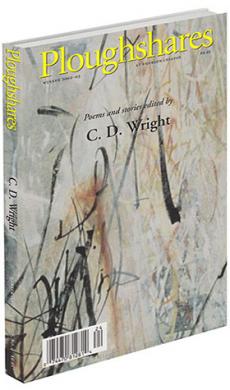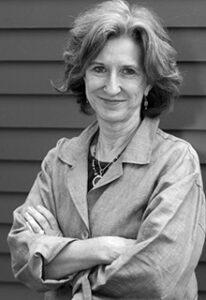Introduction
As Steiglitz needed to photograph O’Keeffe’s neck in 1921 that we might see her as he saw her, Jennifer Martenson shoots from behind in 2002 “to show the vantage rather than what was seen from it.” The poems, fictions, and hybrid “lulus” (see Field, Thalia) herein, largely by younger writers, work along parallel or intersecting lines or come to the page with bold, opposable minds. For my hunger, it took all of them to momentarily stay the rain of frags — when the aim is to feel wholeness itself.
Nor could I resist the inclusion of an artist such as Dorothea Tanning, who after well over half a century as a painter, gravitates all but naturally to the scale of the page to accommodate the persevering intelligence such creative commitment can incur. Again I am returned to a beloved sentence from Henry Miller, “And Titian at 78, just beginning to get a grip on his life, his art.” Homage to the lengthening arc of creativity.
Had I at least tripled the selection, I would have begun my topo map of contemporary poetry in earnest, for I am keenly interested in its rivers, rocks, its solitary trees, along with the more populous regions where ideas converge in feverish verbal combat. The country is as abundant in brains and vision as it is void in receptivity; thus in the perverted way I try to make sense of things, I reason that the less demand for literary arts, the more essential they must be to our survival.
The language these writers are speaking constitutes itself as a protective shield against an epidemic mental blackout and outbreaks of frantic futilitarianism. This is the language that services the mind, that “seizes light’s longing” (see Moure, Erín). This is where we tap into the brazen demands of Ben Lerner to cancel tonight’s weather, to lay down our knowledge claims and remove our teeth; where “the girl with blue eyes is a foreigner.”
While I concentrated on the poetry, both solicited and not, I played a part in selecting the prose, and there, too, I found the primacy of language, extensions of new form, and an irrepressible charge to locate and communicate the hidden signs of hope, ambuscades of betrayal, the always-worth-sticking-around-for seconds of surprise.
One opinion I share with the Dadaists is that art-making presupposes a revolutionary state of mind. Assimilating the practice into commodity or symbol of status nullifies its fundamental aims; therefore at the center of my own adherence to this ranginess in taste is that it doesn’t add up to membership in a private club. The differences choose me. There are so many approaches, so many innovative moves, so many oddly shaped ears in the field; may they never sing in unison.

